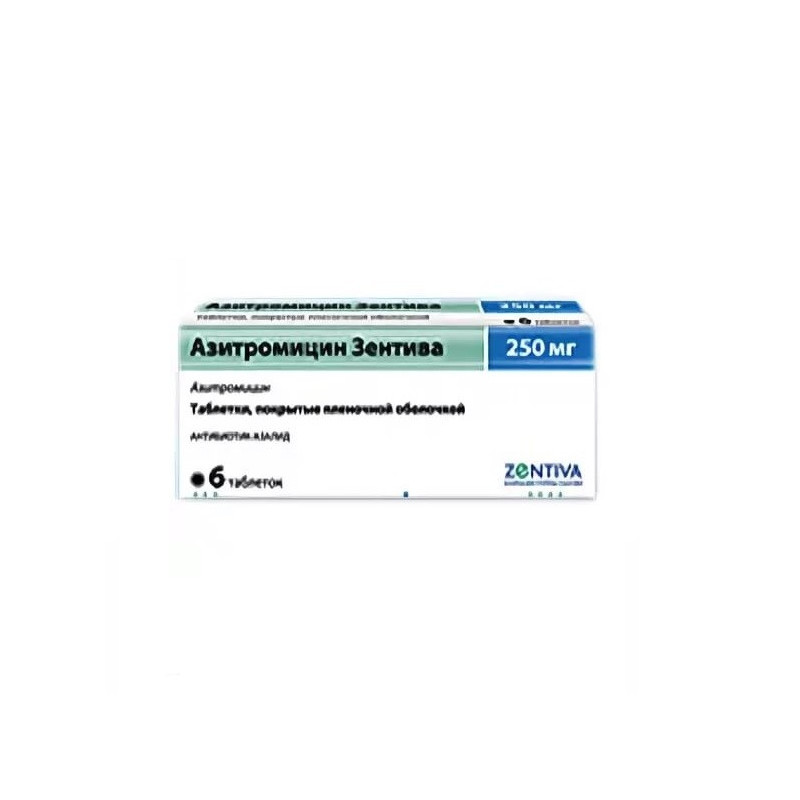



 All payments are encrypted via SSL
All payments are encrypted via SSL
 Full Refund if you haven't received your order
Full Refund if you haven't received your order
AZITHROMYCIN
Azithromycin - An antibiotic of the macrolide group, is a representative of azolides. Inhibits RNA-dependent protein synthesis of susceptible microorganisms. It is active against most gram-positive and gram-negative bacteria, incl. Staphylococcus aureus, Streptococcus pneumoniae, Streptococcus pyogenes (group A) and other types of streptococcus, Haemophilus influenzae, H. parainfluenzae, Moraxella catarrhalis; Bacteroides fragilis, Escherichia coli, Bordetella pertussis, B. parapertussis, Borrelia burgdorferi, Haemophilus ducreyi, Neisseria gonorrhoeae, Chlamydia trachomatis; as well as Legionella pneumophila, Mycoplasma pneumoniae and hominis, Campylobacter spp., Treponema pallidum. It is also active against Toxoplasma gondii.
Inside, 1 hour before or 2 hours after meals 1 time per day.
Adults with infections of the upper and lower respiratory tract - 0.5 g / day for 1 reception for 3 days (course dose - 1.5 g).
With infections of the skin and soft tissues - 1 g / day on the first day for 1 reception, then 0.5 g / day daily from 2 to 5 days (course dose - 3 g).
In acute infections of the urinary organs (uncomplicated urethritis or cervicitis) - once 1 year
In Lyme disease (borreliosis) for the treatment of stage I (erythema migrans) - 1 g on the first day and 0.5 g daily from day 2 to day 5 (the course dose is 3 g). In case of gastric ulcer and duodenal ulcer associated with Helicobacter pylori - 1 g / day for 3 days as part of combined anti-Helicobacter pylori therapy.
Children are prescribed at the rate of 10 mg / kg 1 time per day for 3 days or on the first day - 10 mg / kg, then 4 days - at 5-10 mg / kg / day for 3 days (course dose - 30 mg / kg)
When treating erythema migrans in children, the dose is 20 mg / kg on the first day and 10 mg / kg from 2 to 5 days. In / in, in the treatment of pneumonia - 0.5 g once, for at least 2 days, later inward, 2 capsules (0.25 g each); course - 7-10 days.
On the part of the digestive system: ingestion - diarrhea (5%), nausea (3%), abdominal pain (3%); 1% or less - dyspepsia, flatulence, vomiting, melena, cholestatic jaundice, increased activity of liver transaminases; besides, children have constipation, anorexia, gastritis; candidiasis of the oral mucosa (with a / in the introduction). On the part of the cardiovascular system: palpitations, chest pain (1% or less).
Of the nervous system: dizziness, headache, vertigo, drowsiness; in children, headache (with otitis media therapy), hyperkinesia, anxiety, neurosis, sleep disturbance (1% or less).
From the genitourinary system: vaginal candidiasis, nephritis (1% or less).
Allergic reactions: rash, photosensitivity, angioedema; with a / in the introduction - bronchospasm (1% or less).
Local reactions: with the on / in the introduction - pain and inflammation at the injection site.
Others: increased fatigue; children have conjunctivitis, pruritus, urticaria; with a / in the introduction - the change in taste (1% or less).
In case of skipping a dose, the missed dose should be taken as early as possible, and the subsequent ones - with an interval of 24 hours. It is necessary to observe a break of 2 hours while using antacids. The safety of prescribing (i.v., as well as capsules and tablets) of azithromycin in children and adolescents under 16 years of age has not been finally established (it can be used as an oral suspension in children 6 months and older). After discontinuation of treatment, hypersensitivity reactions may persist in some patients, which requires specific therapy under medical supervision.
Antacids (aluminum and magnesium), ethanol and food slow down and reduce absorption. When co-administered with Warfarin and azithromycin (in usual doses), there is no change in the prothrombin time, however, given that the interaction of macrolides and warfarin may increase the anticoagulant effect, patients need careful control of prothrombin time. Digoxin : increasing the concentration of digoxin. Ergotamine and dihydroergotamine: increased toxic effects (vasospasm, dysesthesia). Triazolam: reduced clearance and increased pharmacological action of triazolane. Slows down the use of, theophylline and others. Xanthine derivatives) - due to inhibition of microsomal oxidation in hepatocytes by azithromycin). Lincosamines impair efficacy, Tetracycline and chloramphenicol increase. Pharmaceutical incompatible with Heparin.
Symptoms: severe nausea, temporary hearing loss, vomiting, diarrhea.
immediate gastric lavage and symptomatic treatment.
Store in a dry, dark place at a temperature not exceeding 25 ° C.
The drug should be stored out of the reach of children.
